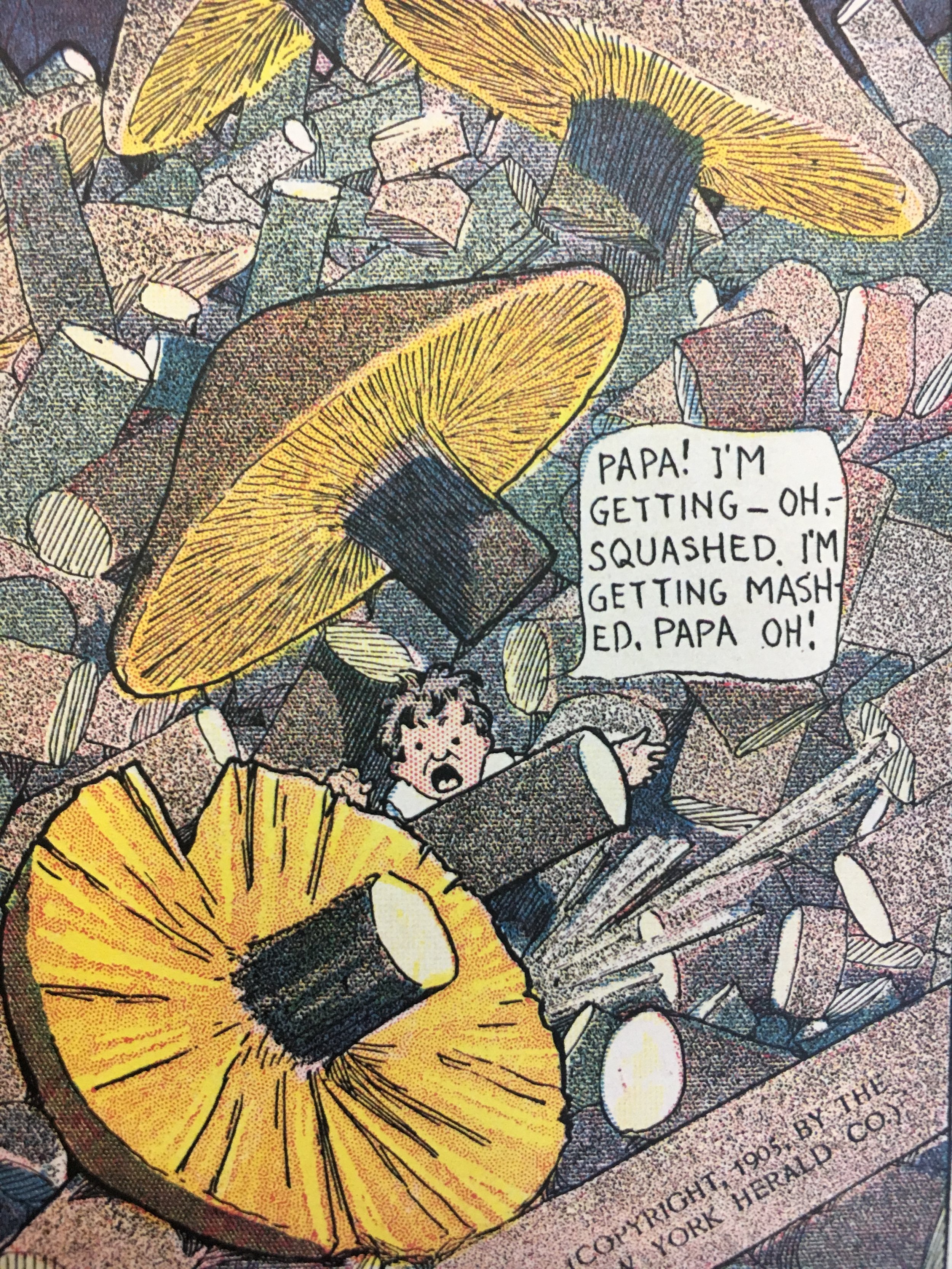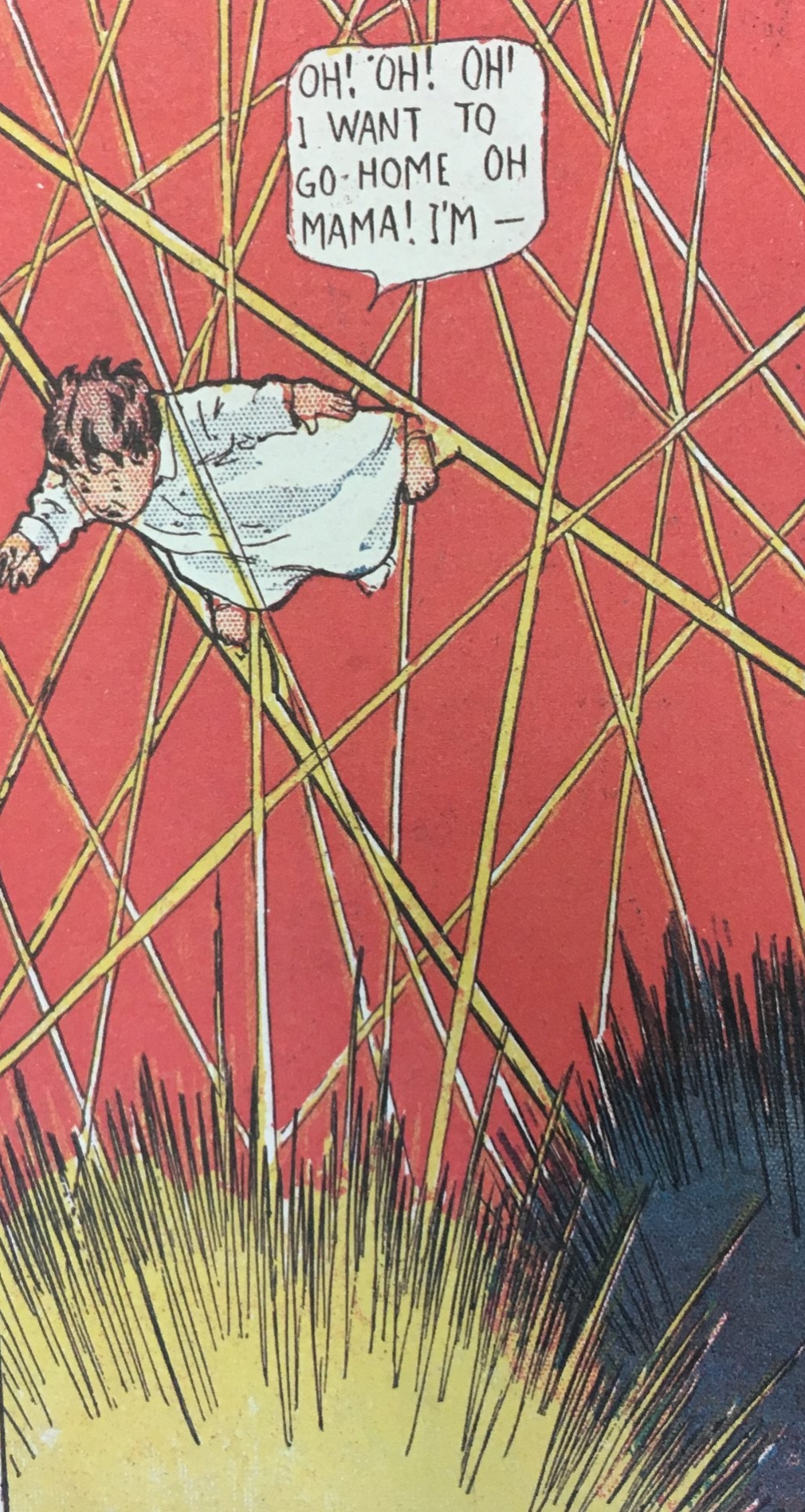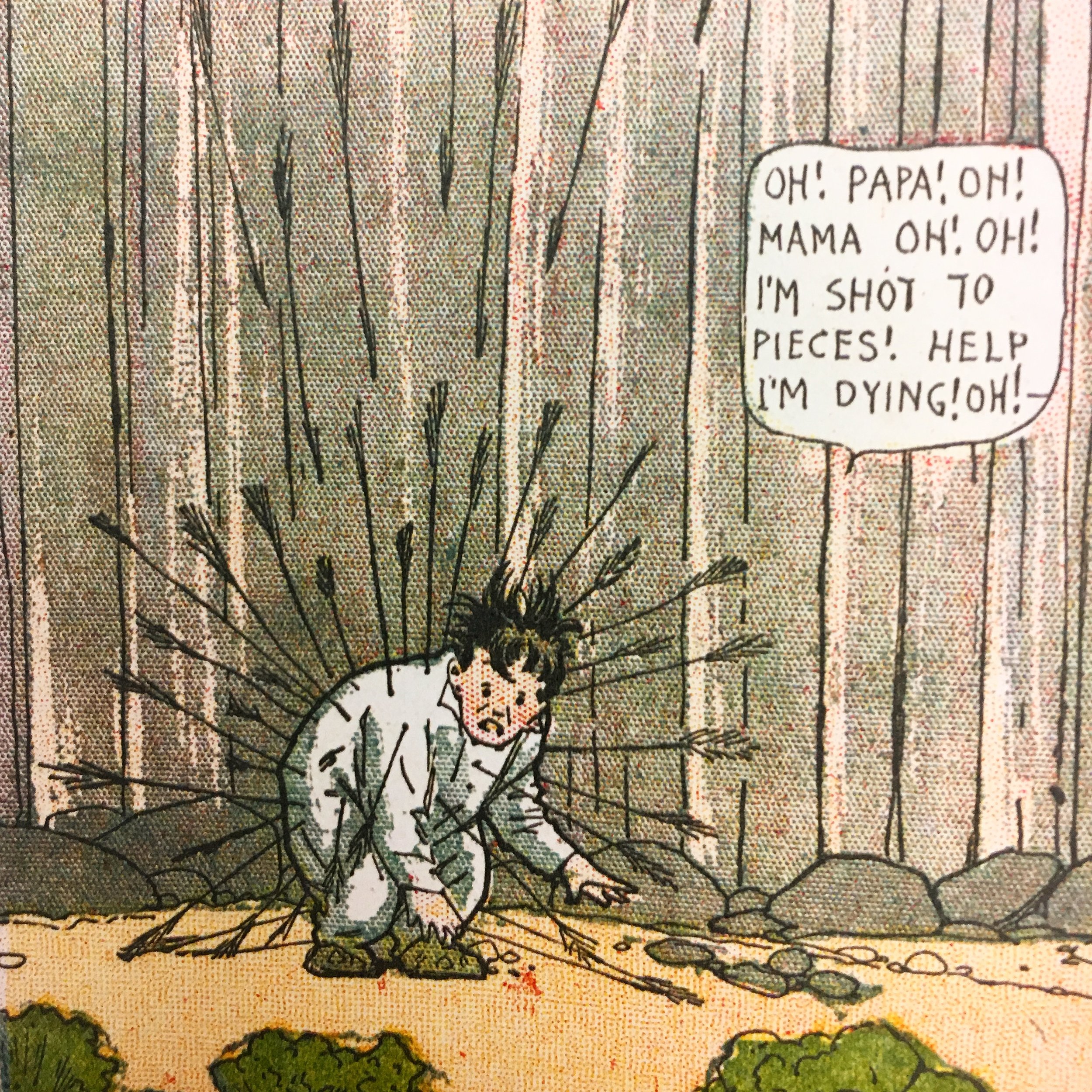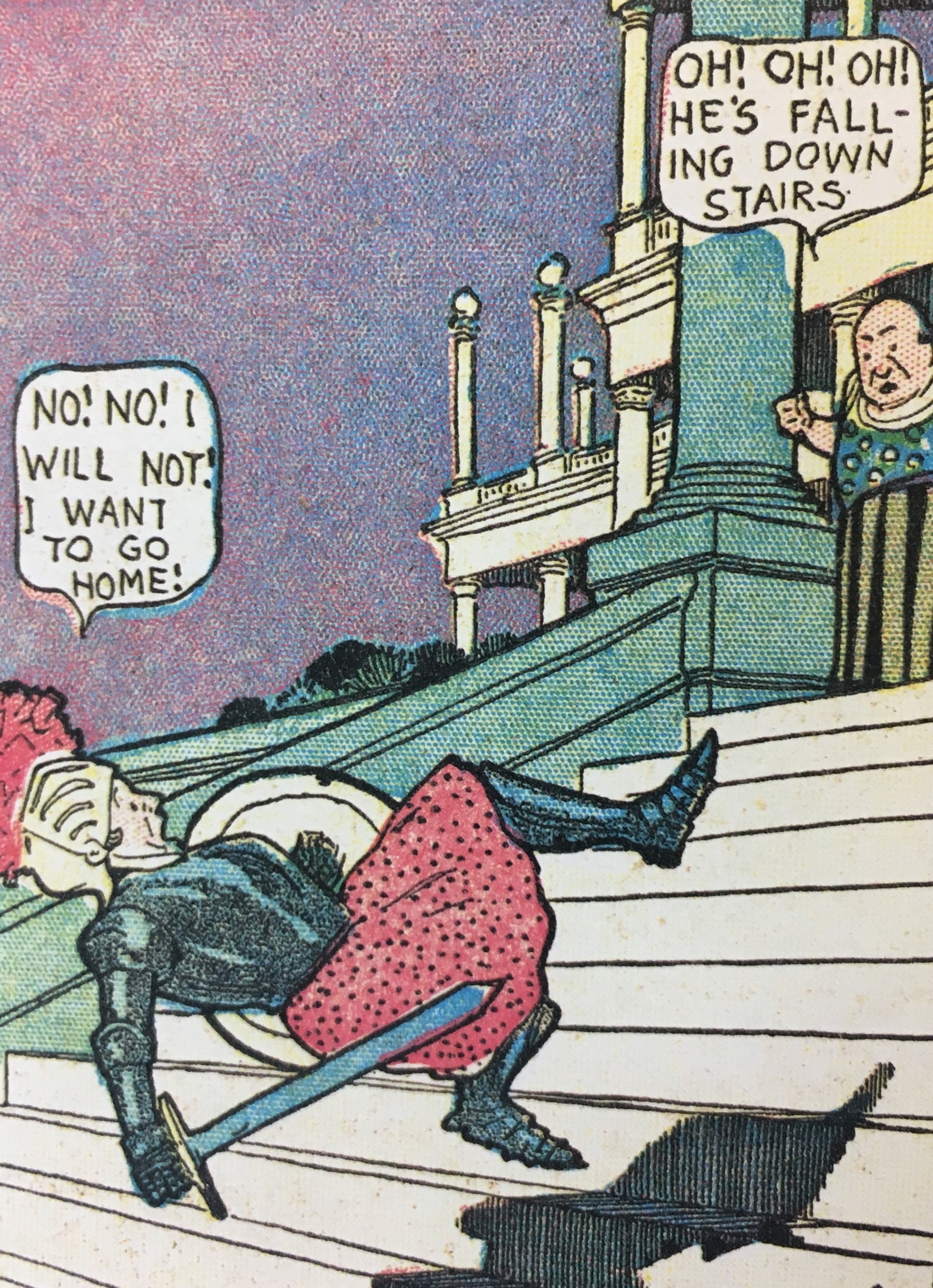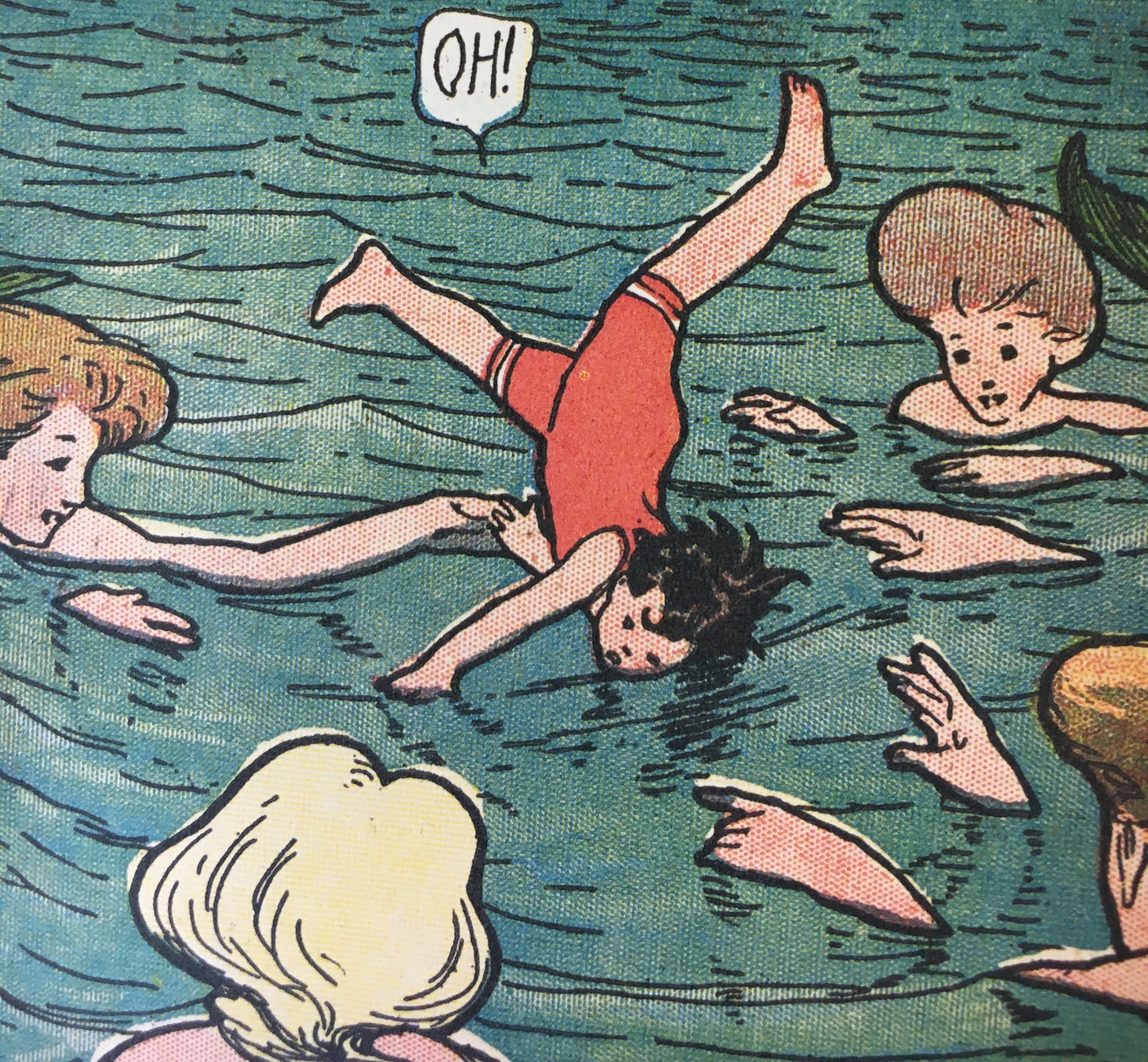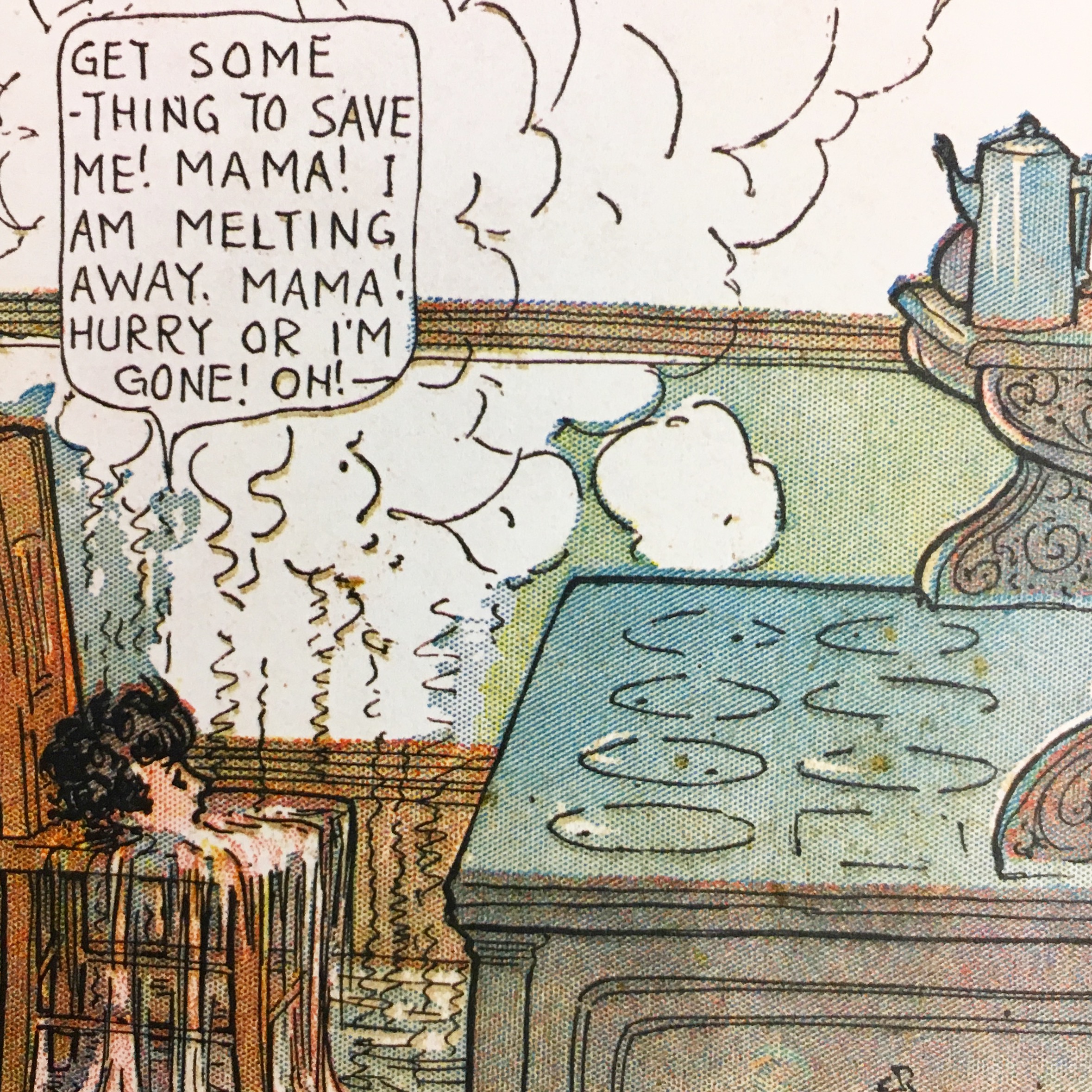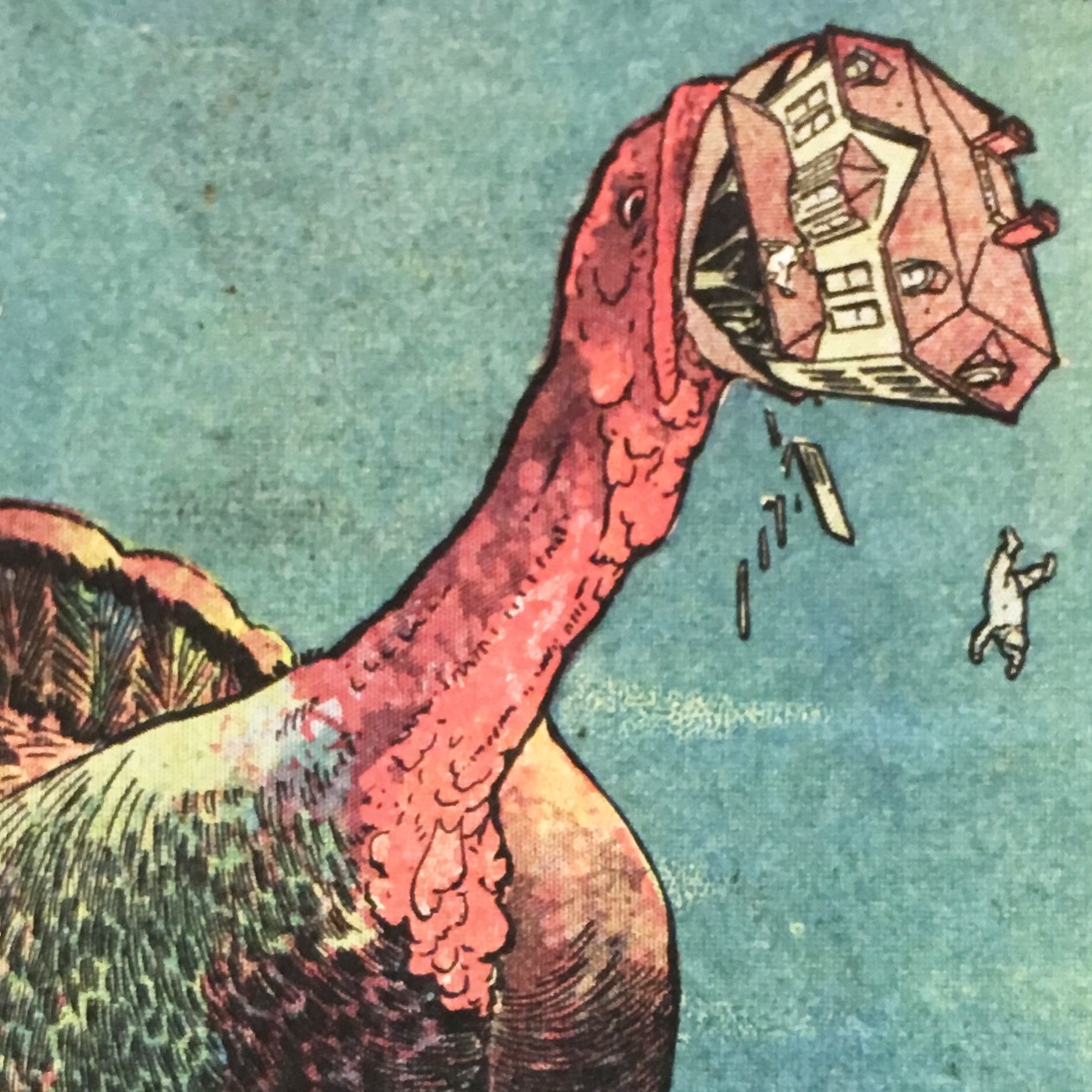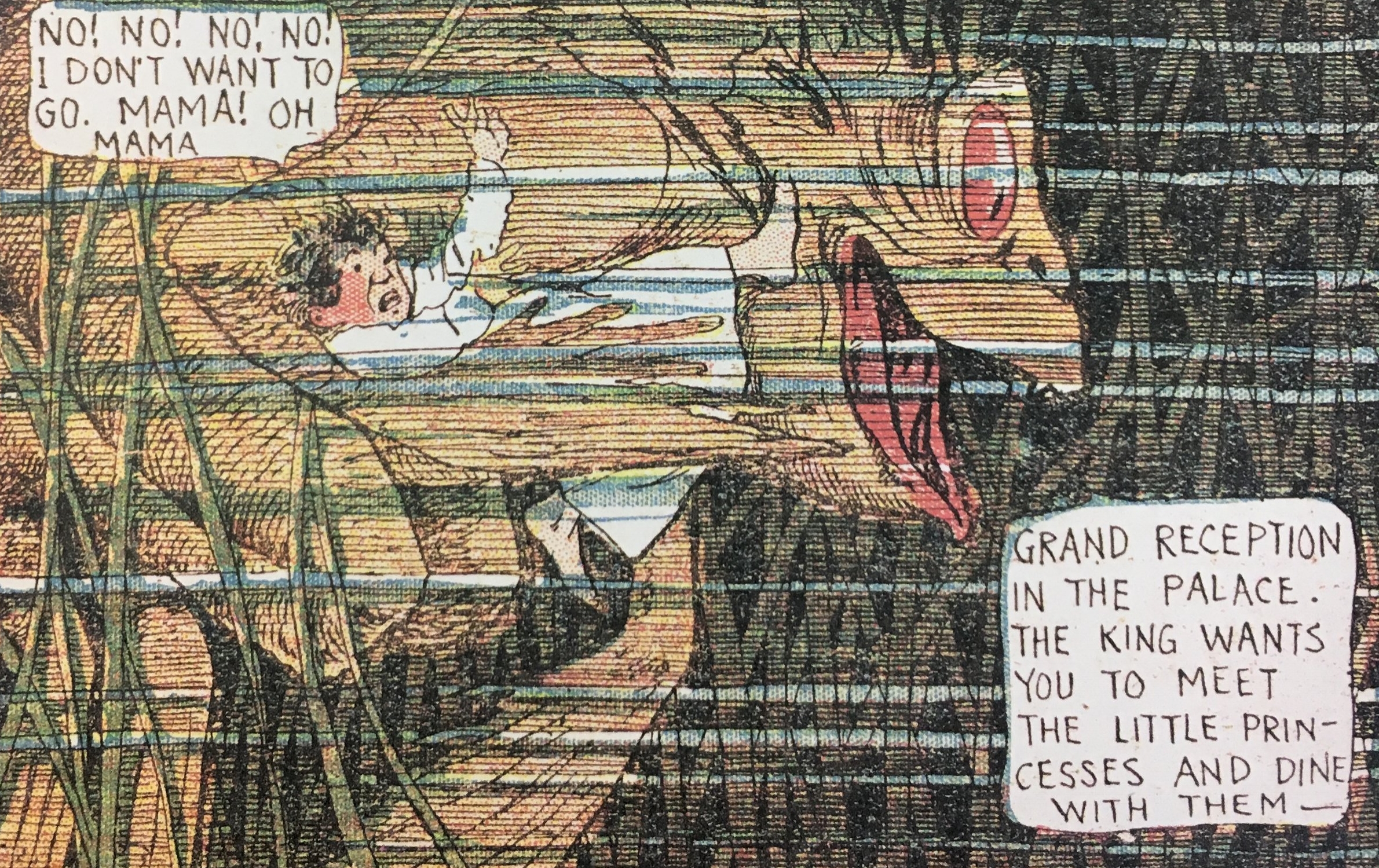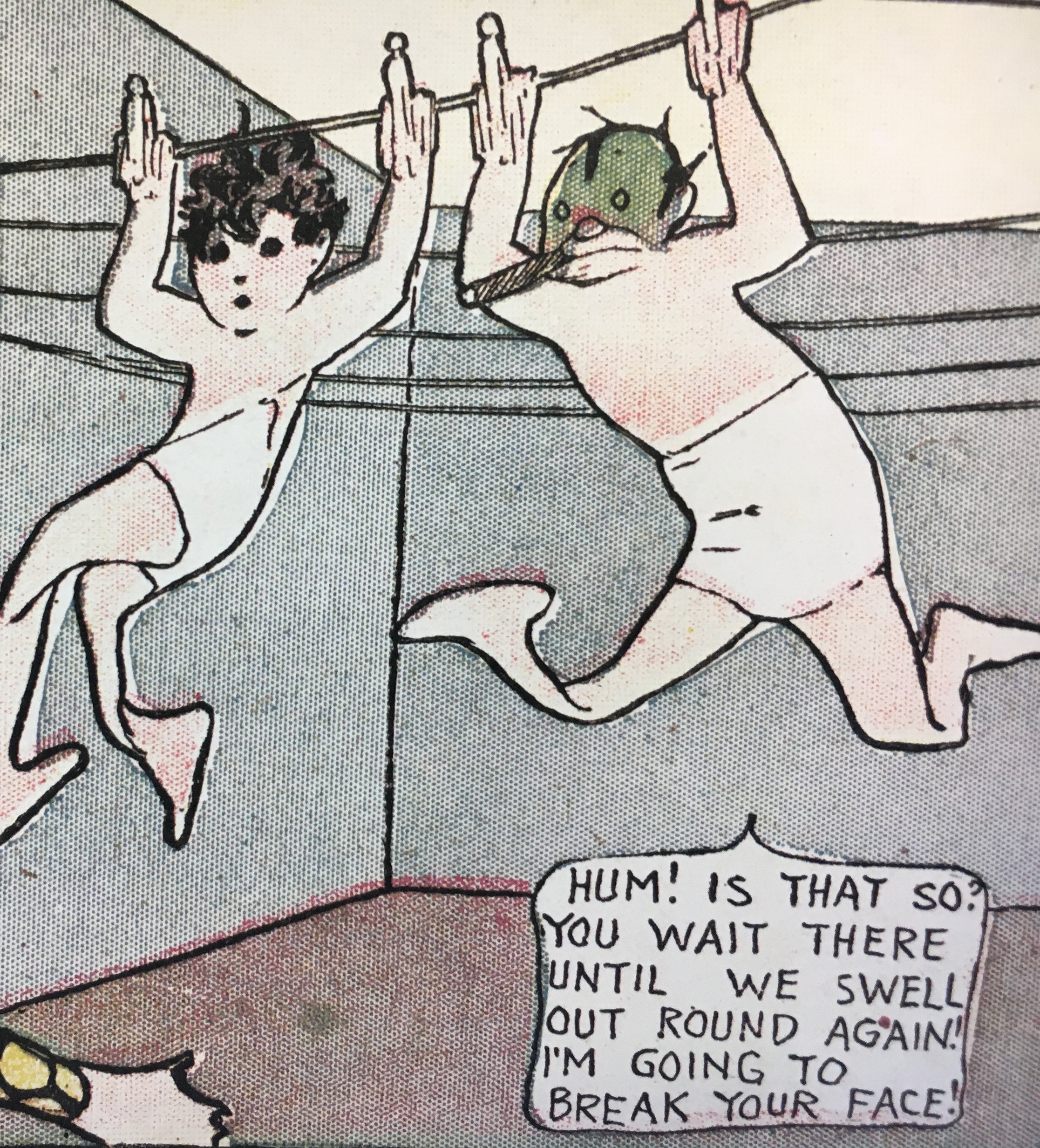In the very first strip of Little Nemo in Slumberland (October 15, 1905), King Morpheus of Slumberland sends a messenger to summon Nemo to his palace in the dream world. This messenger, resembling a clown and called an Oomp, presents the little boy with "a little spotted night horse," named Somnus, to ride across the night sky to Slumberland, but warns him "you mustn't whip him or drive him fast." Of course, Nemo and Somnus are almost immediately challenged to a race by a pink monkey and a green kangaroo. You can probably see where this is going.
While Nemo does accept the challenge, it is not without reservation. He tries to heed the Oomp's warning and slow Somnus down, but the horse is now beyond his control. He is bucked from his steed, calling out for his mother and father as he falls through the infinite vaccum of space.
A lot of parallels can be drawn between Winsor McCay's Little Nemo in Slumberland and books like Frank L. Frank Baum's The Wonderful Wizard of Oz (1900) and especially Lewis Carrol's Alice in Wonderland (1865). I'm not sure if there's a name for this genre of kids trapped in surreal fantastical realms filled with "irrational taboos, forbidden places, and terrifying creatures" (as put by Maurice Sendak in his introduction to John Canemaker's book, Winsor McCay: His Life and Art), but there is a big difference between Baum's and Carrol's most famous works and McCay's. Nemo, at least at first, doesn't have Alice's calm curiosity and stubbornness or Dorothy's matter-of-fact determination. While Alice responds to the maddening world she finds herself in with "Curiouser and curiouser," Nemo's most frequent expression is a tearful howl of "Oh Papa! Oh Mama!' as he reals from whatever fresh doom Slumberland has served him.
Nemo is kind of scaredy-cat. He is not a coward, as we'll get into later, but he spends a good portion of his time in Slumberland scared out of his wits. That's what sets him apart from his more plucky literature counterparts. He approaches Slumberland with awe, but an awe heavily tempered by caution, dread, and genuine panic. And for good reason-- because in Slumberland, Nemo dies A LOT. Between 1905 and 1909 alone, Nemo is:
Even though he knows he will always awake from these deaths and find himself safely in his bed (or more often, on the floor, after falling out of his bed), it's still kind of a lot for a seven year old to handle.
Little Nemo in Slumberland is often called "an epic," and while I would not argue with that, it's also true that it is very light on story. The strips are vignettes, the plots mostly being a framework to hang McCay's beautiful art and imaginative sequences on, and you'd be forgiven for thinking, at first glance, that they are one-off tales. But that actually isn't the case. There are very few truly stand alone strips. The majority of Little Nemo is made up of a series of pretty lengthy narratives, usually sending Nemo and his cohorts on long quests across Slumberland (or, later on, other dream worlds).
In fact, that quest presented in the very first Little Nemo strip (Morpheus summoning Nemo to his palace) goes on for months and months. The King wants Nemo to meet his daughter, the Princess, and be her playmate. This deceptively simple end goal drives almost the entire first year of the comic's run. It also leads to Nemo's character arc. Though he still finds many of the sights of Slumberland terrifying, as Nemo gets closer and closer to meeting the Princess, his demeanor upon waking up from his dreams begins to shift. Earlier strips always ended with a frightened Nemo untangling himself from his sheets or being shook awake by his mother, relieved to be home. Later strips, however, show him resenting his return from the dream world.
This desire to now actually stay asleep is complicated by the introduction of a new character, Flip. Initially presented as an antagonist, Flip is determined to wake Nemo up as frequently as possible. From wearing a cigarette-looking top hat emblazened with the words "Wake up!" to calling in the favor of an early sunrise from his uncle, Dawn, nothing pleased Flip more than disrupting Nemo's quest.
On July 8, 1906, nine months after his journey began, Nemo finally reaches the Princess. But as a resident of Slumberland, she does not share Nemo's fearful nature, and he soon finds himself fretting through several stressful play-dates.
In November of that same year, Flip is sentenced for his crimes against Slumberland, and Nemo demonstrates a real act of bravery. As Flip faces execution, Nemo throws himself between his enemy and the firing squad. After this, Nemo and Flip become friends and they never really leave each other's side while in the dream world again. Flip's trouble-maker personality balances out Nemo's caution, and the two go on to have many adventures together, bonding over an awareness (evidently not shared by the rest of Slumberland's residents) of just how crazy this place really is.
Saving Flip wasn't Nemo's last act of heroism. In 1908, he helps people out in a shanty town, and-- in a harrowing sequence from 1910-- he literally saves two children from a burning building. Perhaps it's because he-- more than anyone else in Slumberland-- knows what it's like to feel totally helpless, but for all his fearful nature, Nemo can't stand seeing anyone in trouble.
I still think he's kind of a scaredy-cat though.




